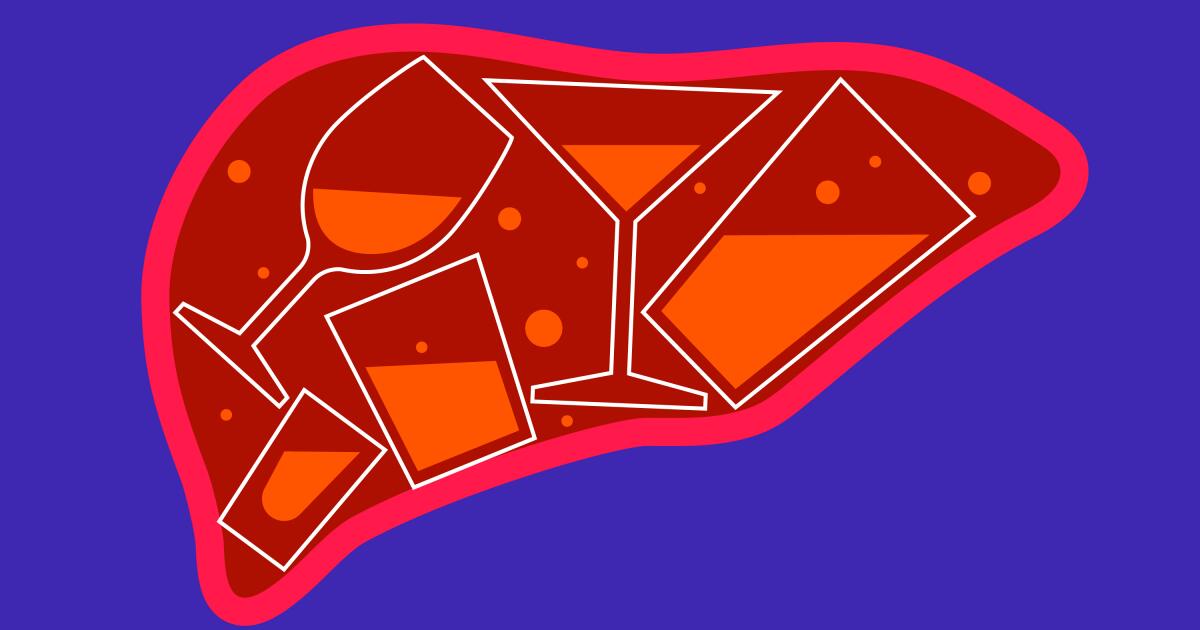According to a new study of USC Keck Medicine, serious liver disease is becoming more common among Americans who seriously smoke.
More people are not doing party with alcohol. And not more drinks of drinkers. More people who drink regularly get sick.
In the last twenty years, the share of heavy drinkers with advanced liver scar increased from 1.8% to 4.3%. For women, more than 1.5 drinks per night are considered to be heavy drinking on average. 2 drinks for men.
USC Keck Medicine and Chief Author Liver Transplant Specialist Dr. Brian P. Lee said, not only the risk is not only increasing, but also more than two floors – almost doubled – it is really surprising, ”he said.
It was published on Wednesday in the journal clinical gastroenterology and hepatology. Lee said that if patients had this information, he thought he could change his thoughts and behaviors significantly.
The increase in the disease has been seen especially in women, elderly people and in those with obesity or diabetes.
Three USC researchers analyzed national health data from more than 44,000 adults conducted between 1999-2020 in a well-known national Heath study, known as NHanes. Of these, 2,474 were severe drinkers according to the definition of the National Institute of Alcohol Abuse and Alcoholism – 20 grams of alcohol per day for women and 30 grams for men, roughly 1.5 and 2 beverages equivalent.
They have found an increase of more than two years in twenty years, like a sponge that hardens into the skin, which is a condition in which healthy liver tissue is replaced by hard, fibrous tissue. If it is left uncontrolled, it may eventually cause liver failure or cancer.
Compared, non -heavy drinkers saw a much smaller increase from 0.8% to 1.4% in the same period.
This increase in liver damage is particularly disturbing, because many people do not realize that nothing is wrong until the disease progresses. “Liver disease is silent, Lee Lee said. “Even if most people are not [advanced liver scarring]I have any symptoms. “
Drinking models did not change much during the working period. However, he made health profiles of heavy drinkers. Metabolic syndrome rates – a set of conditions such as obesity, diabetes and high blood pressure – rose from 26% to about 38%. Demography has also changed: Heavy smokers were more likely to be women, people over 45 years of age, and those who live in poverty.
“In this study, we show that the painting of the American drinker has changed significantly,” Lee said. “There are more women who drink too much, there are more ethnic minorities who drink heavy drinks, and they are known to have higher sensitivity to alcohol, causing liver damage.”
Pfleger Liver Institute Medical Director in UCLA is not included in the study. Sammy Saab said other factors may be in the game. People may be consuming different types of beverages or at different times. “Did we move away from beer, wine, harsh cocktails? He asked.
Then he said there are cultural changes. “In the old days, if you drank, you still have to go home, but now we have Uber, we have Lyft,” he said, which can remove some deterrers for heavy drinking.
The current definition of heavy drinking in the United States can actually be very soft, Lee Lee said, especially compared to developing global standards. For example, Canada recommends a maximum of two drinks per week to minimize health risks.
“We are currently thinking of having heavy drink in the USA as eight or more for women and 15 or more for men – but this is quite high,” he said. “In previous studies, we have shown that you can develop lower amounts of liver disease than the US threshold.”
The findings of the study emphasize the need to rethink long -term assumptions about alcohol -related liver disease, and Lee hopes that it can be used to develop more effective screening methods for early detection.
Saab said that the article brought many good questions to the agenda, Saab said that researchers and clinicians serve as a mobilizing call to better understand this increase in alcohol -related liver disease and how to stop.



